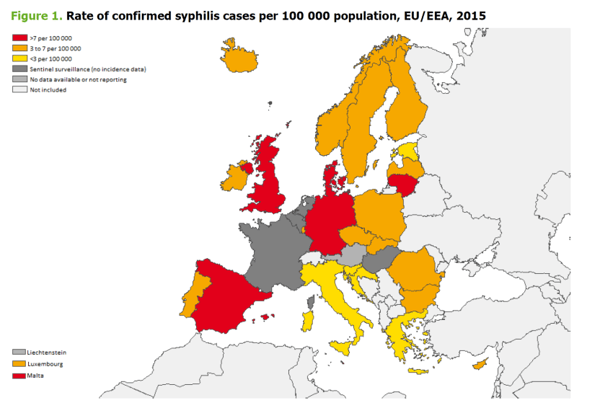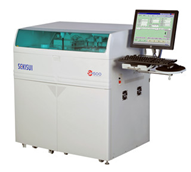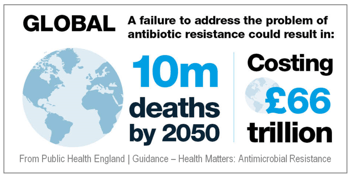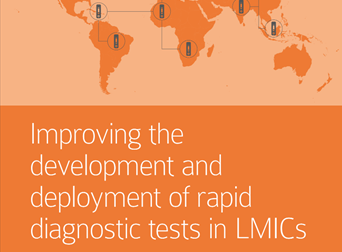 Syphilis: From Near-Eradication to Resurgence
Syphilis: From Near-Eradication to Resurgence
When it comes to syphilis, most everyone has the same first thought: Wait, didn’t we solve that a while ago?
Syphilis was almost eradicated in the U.S., but is now on the rise – and it’s reaching 20 year highs.
Europe has also seen a resurgence of syphilis. According to the European Centre for Disease Prevention and Control: “With the widespread use of penicillin, syphilis prevalence had significantly declined after World War II. However, in several industrialised countries a considerable resurgence occurred in the late 1980s.” In fact, the UK has recently reported ‘a 12% increase relative to the year prior and the largest number of diagnoses reported since 1949’
The ECDC’s Annual Epidemiological report shows syphilis rising steadily in Europe.
“Reported rates of syphilis infection across Europe vary from below 1 case per 100 000 population in Croatia to 13.7 cases in Denmark. The range in reported rates of infection is narrower compared to other STI such as chlamydia and gonorrhoea, and this likely reflects long-standing surveillance for the infection, frequently with serological methods which are not as affected by differences in testing strategies and methods as for other bacterial STI. Cases are diagnosed at different stages of the disease, possibly reflecting different accessibility to diagnostic services across Europe and/or awareness of the infection. Differences in surveillance systems may also play a part; reporting of non-infectious cases, for example, may contribute to differences in overall numbers between countries.”
 The ECDC report also discusses the public health implications, noting that “Promoting safer sexual behaviour, condom use and increasing testing rates among risk groups through targeted prevention campaigns is essential to prevent cases and reduce the risk of the complications of late stages of syphilis.”
The ECDC report also discusses the public health implications, noting that “Promoting safer sexual behaviour, condom use and increasing testing rates among risk groups through targeted prevention campaigns is essential to prevent cases and reduce the risk of the complications of late stages of syphilis.”
Syphilis Detection Requirements & Testing
A reportable disease in many countries, syphilis diagnosis requires both screening and confirmatory testing – along with clinical signs and assessment. Screening recommendations differ from country to country, but labs will usually perform either a treponemal test or a non-treponemal test. Experts are divided on which of these two assays should be performed first. In Europe, the reverse sequence algorithm is recommended (treponemal screening), but many countries remain loyal to the traditional algorithm (non-treponemal screening).
While the possibility of performing treponemal assays on an automated analyser exists, the ability to automate RPR testing has so far been lacking. Non-treponemal assays (typically an RPR Card test) are performed manually, and often in a different lab – leading to a key source of inefficiency in whichever testing algorithm a lab chooses.
As the number of syphilis cases continues to rise, the need to fully automate all steps in the syphilis testing algorithm increases, and RPR testing has become an excellent candidate for lab automation.
For an in-depth review of the techniques and differences between treponemal and non-treponemal tests, refer to WHO’s “Laboratory diagnosis of sexually transmitted infections, including human immunodeficiency virus” download (syphilis begins on page 107.) The 2014 European Syphilis guidelines also describe the various clinical stages of syphilis, and provides an in-depth review of the various detection and conformation methods as well as management & treatment regimens.
The Benefits of Automated RPR Testing
Automated RPR testing enables both tests for syphilis to be run on the same clinical chemistry analyser, providing workflow benefits to the lab and significant efficiencies in turnaround time.
When a positive treponemal result is obtained, the analyser automatically tests the same sample with the RPR assay (reflex testing). Lab personnel get both test results quickly, from one system. The benefits of lab automation are widely known, among them are:faster, more accurate results
- more reliable results
- workflow efficiency
- more flexibility with personnel assignments.
The Sekisui Diagnostics SEKURE® TPLA and RPR Tests: Ideal for Screening
Sekisui’s automated solution with the CE marked SEKURE TPLA and RPR tests (not currently available in the U.S. or Canada) combines maximum ease-of-use and the flexibility to run it on the SK500 Clinical Chemistry System or other platforms.
 Sekisui Diagnostics Automated RPR Testing solution:
Sekisui Diagnostics Automated RPR Testing solution:
- Delivers fast results (10 minute assay)
- Provides quantitative RPR results and detects small changes in titre, aiding physicians in treating syphilis & monitoring therapy.
- Fully automates the testing algorithms, leading to more consistent, accurate and precise results
- Delivers rapid reflex testing of multiple test samples
- Standardizes the RPR test to the WHO International Standard for Syphilitic Human Serum
- Correlates with traditional methods (TPHA/ RPR Card test)
For more information about syphilis assays, contact Sekisui Diagnostics.



Share Article